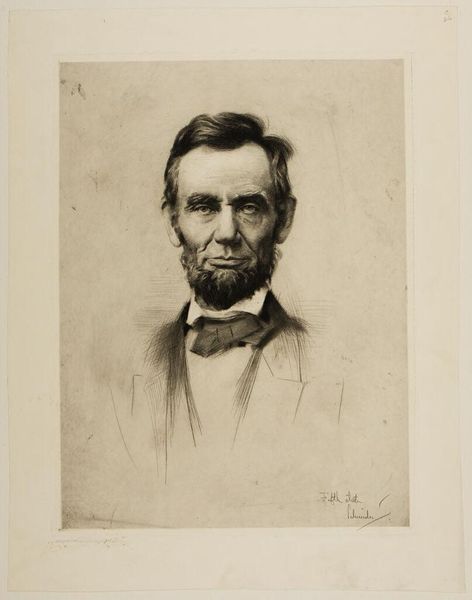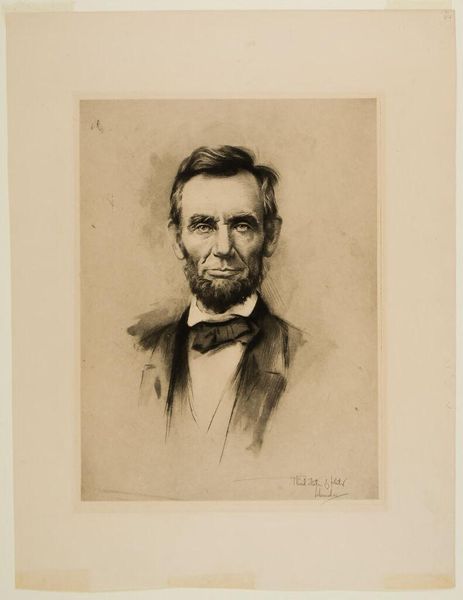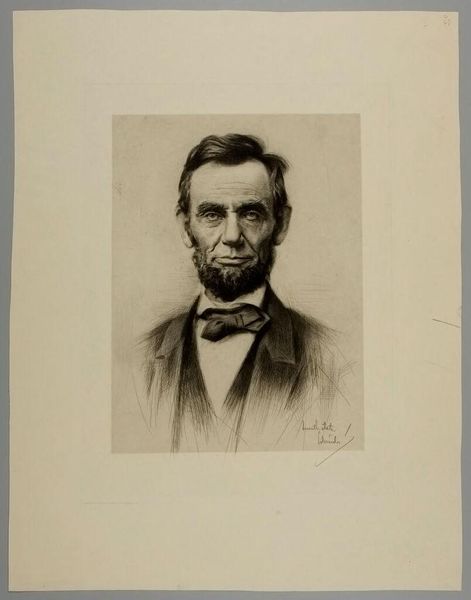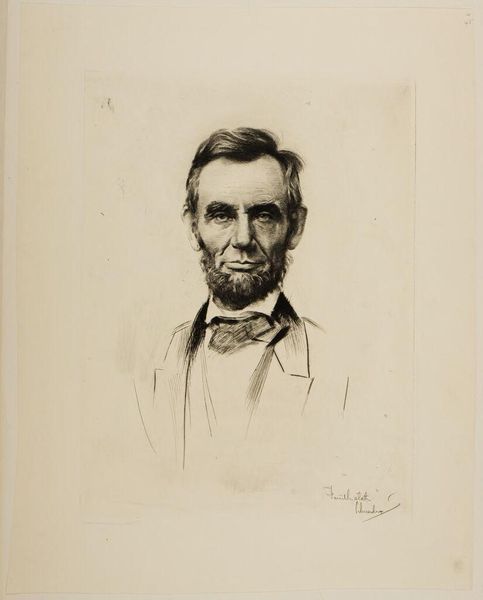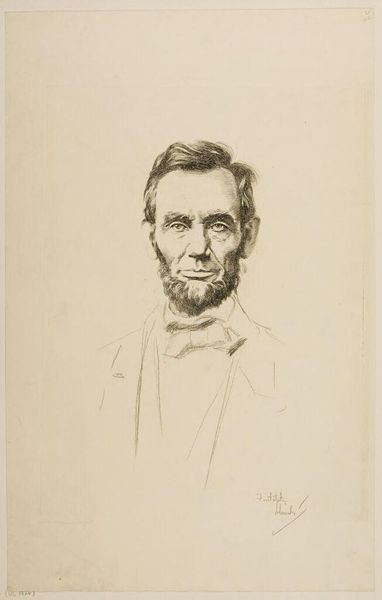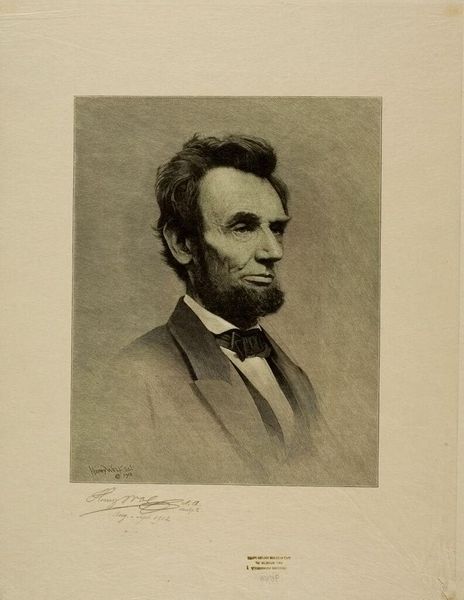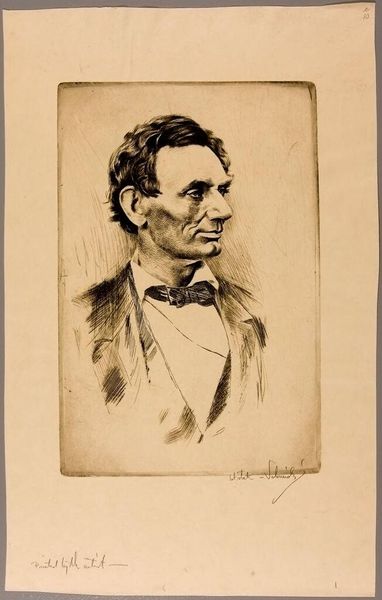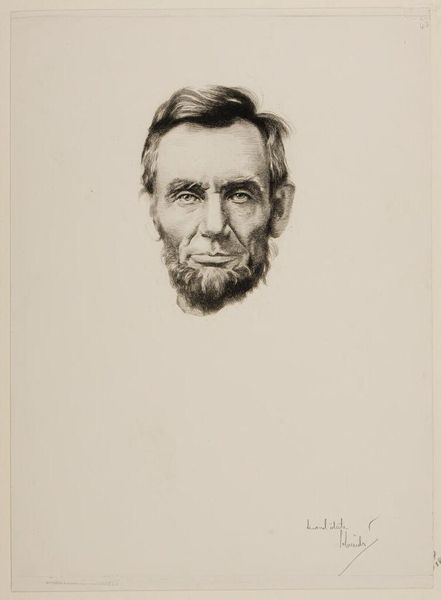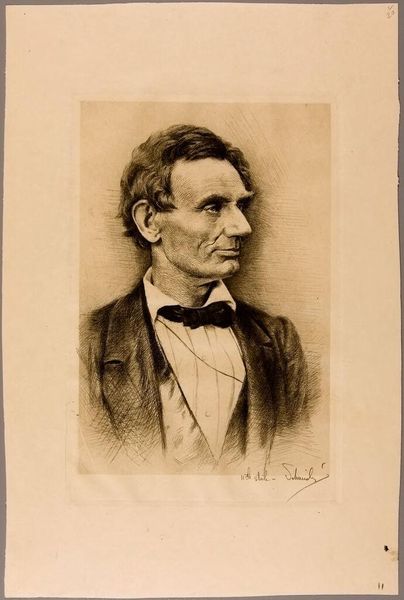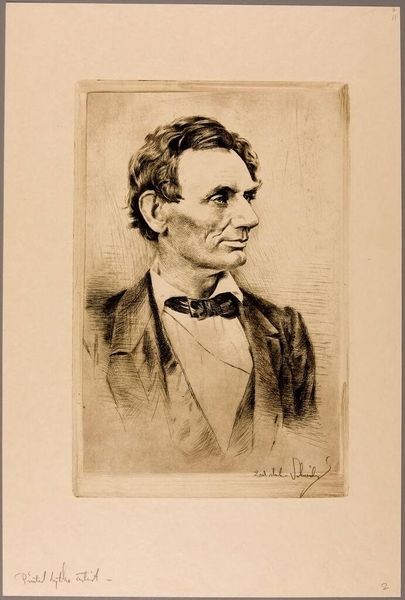
drawing, print, pencil
#
portrait
#
drawing
# print
#
charcoal drawing
#
pencil drawing
#
pencil
#
portrait drawing
#
history-painting
#
realism
Copyright: National Gallery of Art: CC0 1.0
Curator: Here we have a print titled "Lincoln," by Otto J. Schneider. The artwork renders a detailed portrait of Abraham Lincoln, presumably made from pencil or charcoal. Editor: Immediately striking is the stark realism. The artist masterfully captures the texture of Lincoln’s beard and the deep lines etched into his face. The light is very evocative. Curator: Yes, Schneider's approach highlights a tension between verisimilitude and graphic artifice. Note the cross-hatching that defines the contours of his face and bow tie. How does this use of line contribute to the image? Editor: It's about craft as well as subject. One senses the hand labor involved, the methodical buildup of the image layer upon layer. These printed versions democratize the image but also maybe flatten out that direct, human contact of the drawing. The artist is a conduit of a pre-existing photographic portrait. Curator: True. We have a removal from direct touch. That the print medium enables distribution certainly adds layers of context, a kind of visual propaganda even, during periods of upheaval. Does the means of mass production transform the iconographic resonance, or dilute it? Editor: I lean towards the latter. Consider the cost of materials. In a sense it makes the artwork a reproducible, cheap, available for everybody, but at the same time loses an element of exclusivity. I question what does that do to our idea of what art is supposed to be, and where we find our icons? Curator: But even within that democratic distribution, there are formal choices that assert authority. Look at the composition; the head and shoulders take up nearly the entirety of the frame, centering the subject with undeniable prominence. Editor: Absolutely. While the print might speak to wider availability, Schneider reminds us that artistic choices are not innocent. Mass media helps control visual culture at the same time as it enables the message. Curator: It’s a fitting end-point to consider, isn't it? What seemed straightforward reveals how technical skill can interplay with themes of nation, identity and availability. Editor: Indeed. And reflecting upon material origins invites a richer discussion of both art and its socio-cultural contexts.
Comments
No comments
Be the first to comment and join the conversation on the ultimate creative platform.
